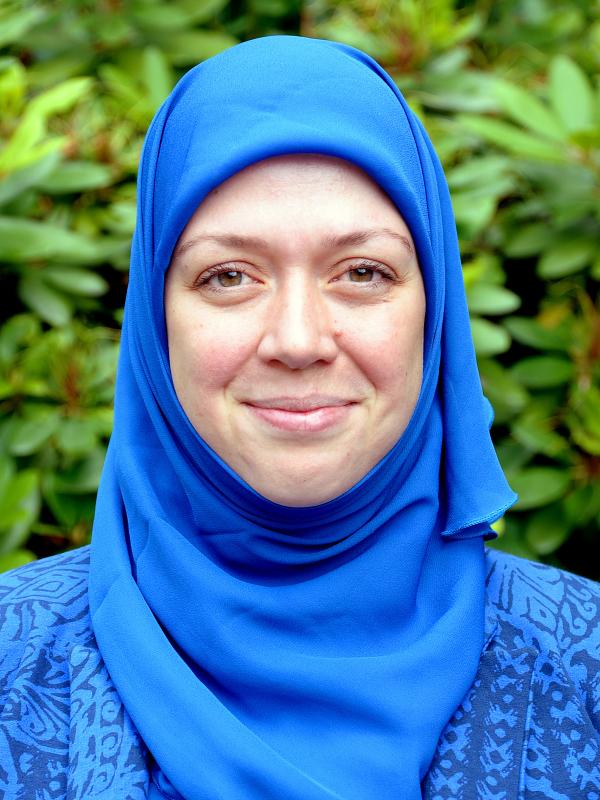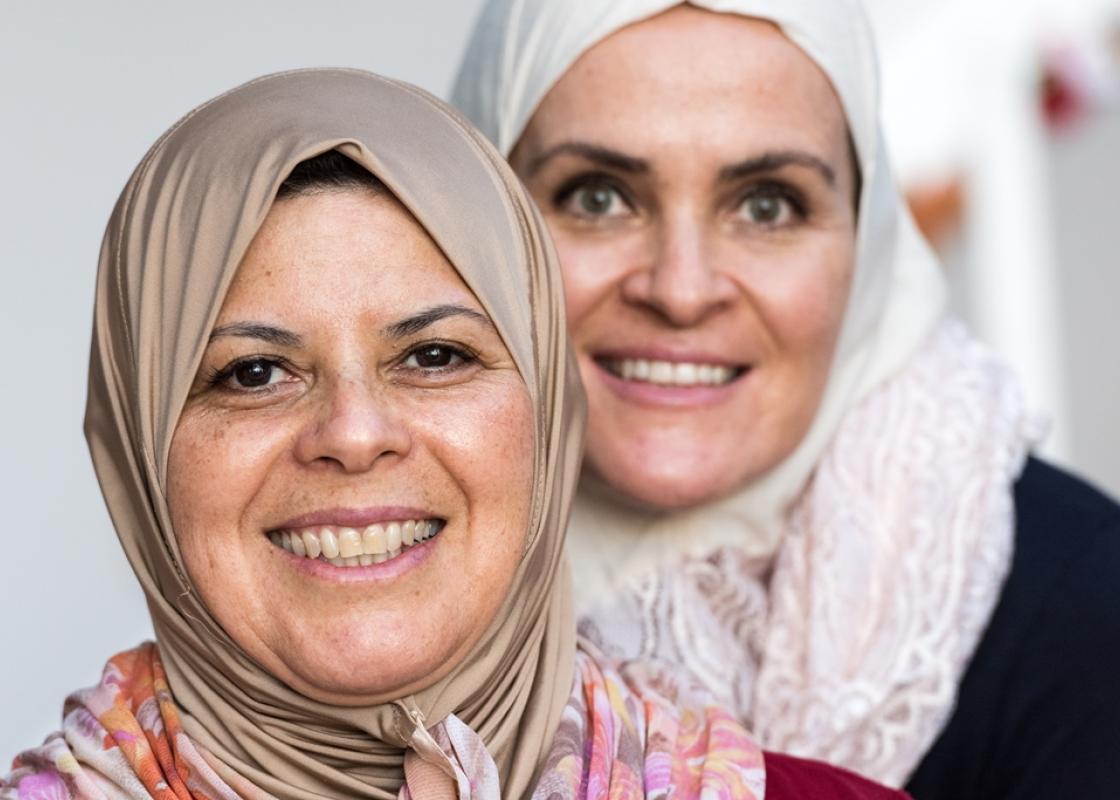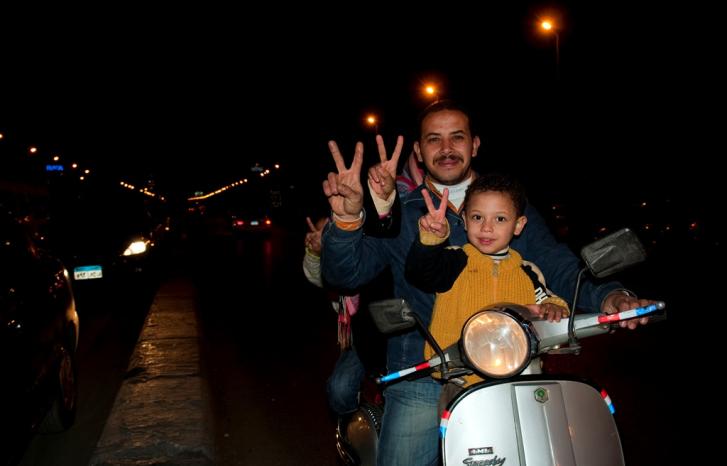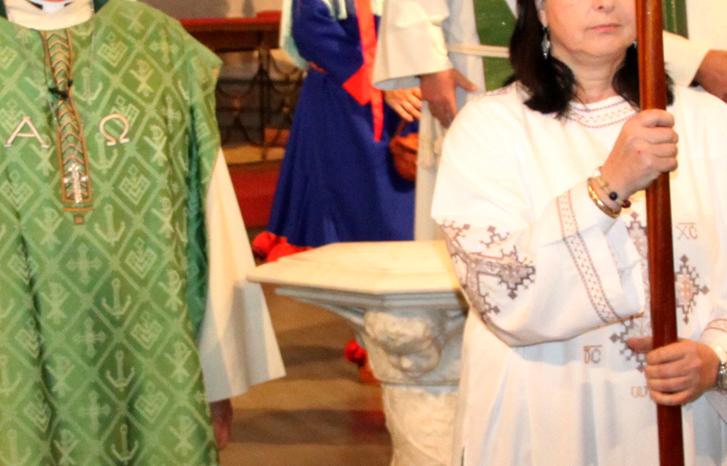Dutch and Norwegian immigrant women have become more conscious of their religious identity. The portrayal of gender equality as a Western cultural value has contributed to this.
“There is a lot of literature on how Muslim women are the target of stereotyping, but there is very little literature on how women with a Muslim background represent themselves and the kind of image they have of themselves as a group. It was interesting for me to see how the dynamic between these two portrayals – the women’s own and society’s – worked together,” says Margaretha van Es.
She defended her doctoral thesis in 2015 at the University of Oslo on the topic of Muslim women in Norway and the Netherlands and their encounter with prejudice within society at large. She has recently published a book based on her thesis.
Counter-reaction

Margaretha van Es has studied how Muslim women in the Netherlands and Norway organize themselves, either in religious-based organizations or based on their identity as immigrants.
“In the 1970s, the women organized themselves primarily on the basis of their status as immigrants. Today, in contrast, we see that women are organizing themselves more and more based on their religion,” says van Es.
“They are working actively to show how they feel liberated through the Koran and the Hadith, which is a collection of narratives about the prophet Muhammad: what he said, did or gave his tacit consent to. When the debate emphasizes that Muslim women are oppressed under Islam, we see a counter-reaction. The result is that the women identify themselves even more as Muslims.”
See also: “Norwegian authorities fail Muslim women”
Fine to be Muslim and Dutch
The researcher interviewed women with a Muslim background in 14 religious and secular organizations in Norway and the Netherlands. She also studied archived records, newspaper articles and government white papers, and says that she sees a clear connection between how the women view themselves and the way society at large views them.
The 1990s in the Netherlands was filled with hope and optimism about what the future held for immigrants.
However, the historical development of the issue of Muslim women’s self-understanding and society’s ideas about them has been different in Norway and the Netherlands.
“In the Netherlands, 9/11 was a major turning point, while as early as the 1990s Norway was having heated debates about Islam and gender equality, especially regarding forced marriage within the Pakistani minority culture,” says van Es.
“Up until 2001 in the Netherlands, the focus was on minority women’s socioeconomic position, their access to the labour market, discrimination and access to education. Although culture was also discussed in the 1990s, culture was not viewed as particularly important,” says van Es.
Encouraged Muslim identity
She says that the 1990s in the Netherlands was filled with hope and optimism about what the future held for immigrants.
“By studying newspaper clippings and other archived material, I found a widespread belief that a multicultural policy would eventually even out the social and economic problems associated with immigration. This meant that the various religious groups in society would obtain some right of self-determination on religious and cultural issues, while the state would do more to facilitate integration in society at large through labour market measures and housing policy, for example,” she explains.
“In fact, the state encouraged women to embrace their Muslim identity. They thought it was relatively unproblematic to combine a religious identity, such as Muslim, with a Dutch national identity. It was viewed as much more problematic, however, to have a strong Turkish or Moroccan identity in addition to Dutch citizenship.”
Gender equality as culture
Optimism about immigrants in the Netherlands changed after the terror attacks in the U.S. in 2001. In the years following 9/11, politicians and pundits such as Pim Fortuyn and Ayaan Hirsi Ali garnered attention for their criticism, not only of Islam, but also of multiculturalism as a social system.
“At that time the debate began to turn more towards topics such as forced marriage, genital mutilation and how Muslim women should come out of their homes and participate in society,” says van Es.
“Paradoxically, not all critics of Islam were particularly interested in the women they talked about. It is typical for right-wing populists to focus instead on gender equality as a Dutch cultural value.”
She point outs, for example, that Geert Wilders, the right-wing populist and leader of the Party for Freedom, has never tried to pretend that he is interested in helping Muslim women, but instead has made it clear that he wants to protect what he sees as Dutch values.
“It is typical for right-wing populists to focus on gender equality as a Dutch cultural value.”
Stine Helena Bang Svendsen, a gender researcher and associate professor in the teacher education programme at NTNU, says that multiculturalism in Norway continues to be a relevant issue in Norwegian politics and legislation.
“In the public sphere, multiculturalism has been declared dead in a number of instances, but it nevertheless refuses to remain so. You could say that multiculturalism is a ghost that haunts the Norwegian public debate because it reminds us of the fact that the ‘Other’s’ culture cannot be made to disappear through assimilation without terrible consequences.”
Women’s liberation emphasized from the start
The research conducted by van Es shows that the gender equality issue was already important in Norway when the first Pakistani immigrants came to the country in the 1970s. The government white papers from that period reflected a concern for how the “guest workers”, as they were called back then, had brought their wives with them and that those women needed various services as well.
She notes that the criticism of multiculturalism in Norway began in the 1990s.
“In the 1990s, the children of first generation immigrants became adults, and cultural practices such as the honour culture and forced marriage became more evident. The newspaper articles I have analysed show that the debate was sensationalized and Norwegian journalists did not have the same cultural sensitivity that we see today.”
She asserts that the debate shows, however, that women’s liberation and gender equality were emphasized from the outset.
“This illustrates that in Norway these issues are closed tied to national identity. From this perspective, the debate in Norway has been more biased with regard to minority women. The Netherlands has been more concerned with other aspects of women’s identity, in addition to gender.”
Culture and politics are equated

Stine Helena Bang Svendsen says it is important to view the debate on multiculturalism in Norway in connection with the national unwillingness to address Norwegian racism.
“In politics we can see that multiculturalism has limited, but nonetheless significant elbow room vis-á-vis national minorities and indigenous people. By the same token, the widespread refusal to acknowledge racism in Norwegian society plays a role here,” she argues.
“The Norwegian debate on female circumcision and forced marriage are classic examples of how Muslims’ sexuality is portrayed as oriental and exotic. However, this understanding of the debate has had little impact in the Norwegian public sphere. The reason for this is not that knowledge about racism is unavailable in Norway, but that the unwillingness to admit it exists is very strong.”
According to Svendsen, when a type of policy is perceived as being part of a specific culture, as is the case when Norway and gender equality are equated with each other, the policy has achieved status as relatively non-controversial.
“The Norwegian debate on female circumcision and forced marriage are classic examples of how Muslims’ sexuality is portrayed as oriental and exotic.”
“Norwegian state feminism and gender equality policy are an example of a policy in which the main tenets no longer are particularly controversial. This means that the policy can be interpreted as a characteristic of Norwegian society as a whole,” she says.
“For feminists, though, an understanding of gender equality as culture is problematic. It portrays Norwegian society as already gender equal, despite the fact that it absolutely is not. From an anti-racist perspective, such an understanding of gender equality as culture is problematic because it depicts values found in many countries and cultures as being special for a white Norwegian culture.”
See also: Norwegian schools reproduce racism and gender stereotypes
More Islamic feminists
In today’s debate it is often assumed that immigrant women will gain gender equality and freedom by adapting to the local values. However, van Es notes that this is very problematic because it equates national belonging with the opportunity to be a free, gender-equal individual.
“Far too often we overlook the fact that this debate affects the gender equality process for Muslim women, and this is not necessarily positive. Polarization makes it difficult to talk about problems within minority communities for fear of further stigmatization. This is why it is important to talk about problems with gender equality in an anti-racist context.”
In her book, van Es has focused on both secular and religious women. In Norway she interviewed women from organizations such as the MiRA Resource Centre for Black, Immigrant and Refugee Women and the Muslim Student Society.
Oppression as a label
“I have also looked at archived documents that the organizations have stored. Their brochures and membership magazines help to tell how these women see themselves: For example, whether they hold courses on gender equality and women’s liberation or if they focus instead on job-search courses.”
“Oppression has become a kind of label that can be used to distinguish between those who qualify as legitimate citizens and those who do not.”
According to van Es, the use of the term “oppressed” has changed as well.
“In the 1970s, oppression was something carried out against women. Now oppression has become a kind of label that can be used to distinguish between those who qualify as legitimate citizens and those who do not,” says van Es.
Nonetheless, the number of Muslim women who define themselves as “feminists” has increased.
“In the 1980s, many Muslim women, especially Dutch converts, were keen to point out that they were concerned with equality, but not necessarily with gender equality. Women and men were valued equally, but they fulfilled different roles in society. More recently, however, many young Muslim women have begun to identify themselves as Islamic feminists, and they use the Koran and the Hadith actively to argue in favour of more gender equality. This marks a historic distinction in how these women view the relationship between feminism and Islam.”
Translated by Connie Stultz
In 2015, Margaretha van Es defended her doctoral thesis entitled The Stigma of Being Oppressed: Self-Representations by Women with a Muslim Background in Minority Organisations in Norway and the Netherlands 1975-2010 at the Department of Archaeology, Conservation and History, University of Oslo.
Her thesis has now been published as a book by Palgrave Macmillan under the title Stereotypes and Self-Representations of Women with a Muslim Background: the Stigma of Being Oppressed.
Margaretha van Es has studied what women with a Muslim background in various minority organizations have said about themselves and Islam between in the years between 1975 and 2010. She has interviewed women in 14 religious and secular organizations in Norway and the Netherlands. In addition, she has studied archived documents, newspaper articles and government white papers.
Multiculturalism is used most often to describe a society comprised of groups with various ethnic and cultural backgrounds.
As a political principle, multiculturalism entails acknowledging the right of minority groups to have their own culture and identity. In this case, the state allows minority groups to organize themselves to some extent with regard to cultural and religious issues, and instead the state takes responsibility for integration through the labour market and housing or welfare policy. This contrasts with assimilation, where minority groups must change their cultural values to be incorporated into society at large.
Multiculturalism as a political principle has been criticized for managing diversity by categorizing people into ethnic, cultural and religious groups.



